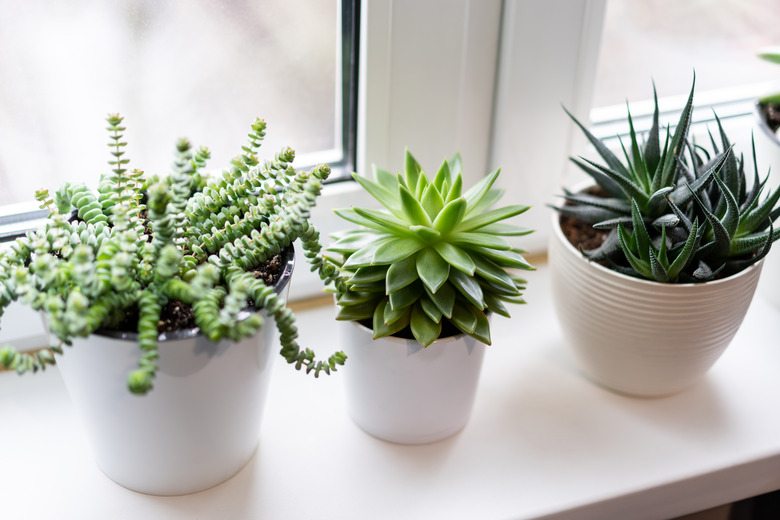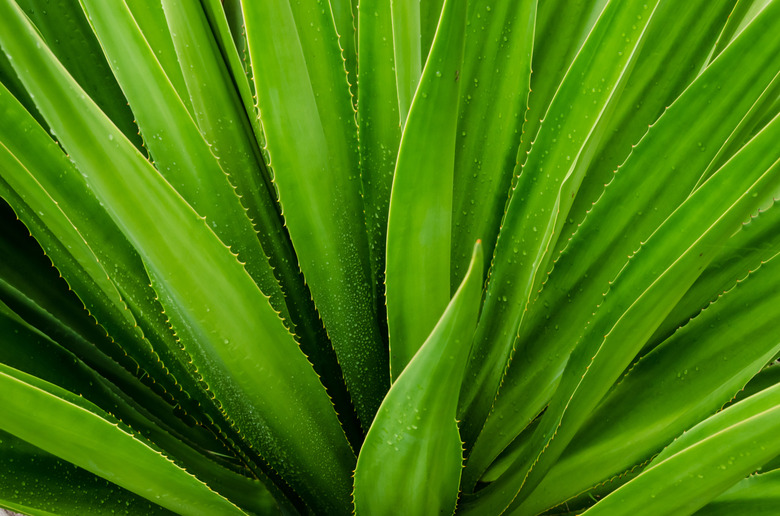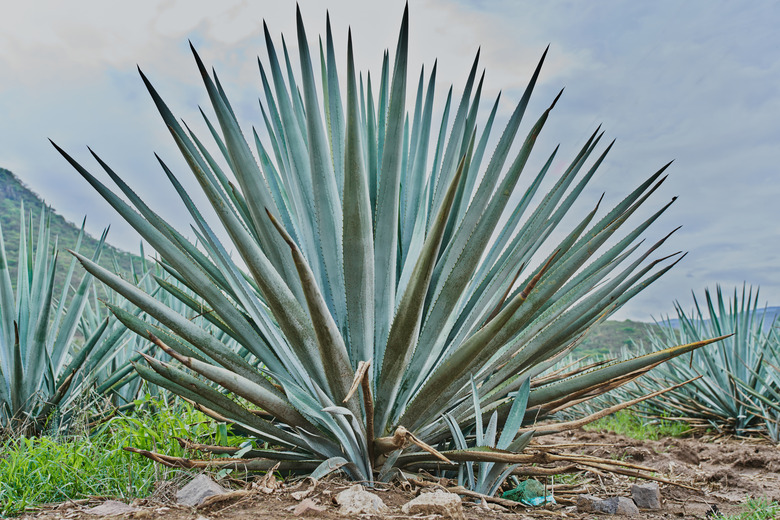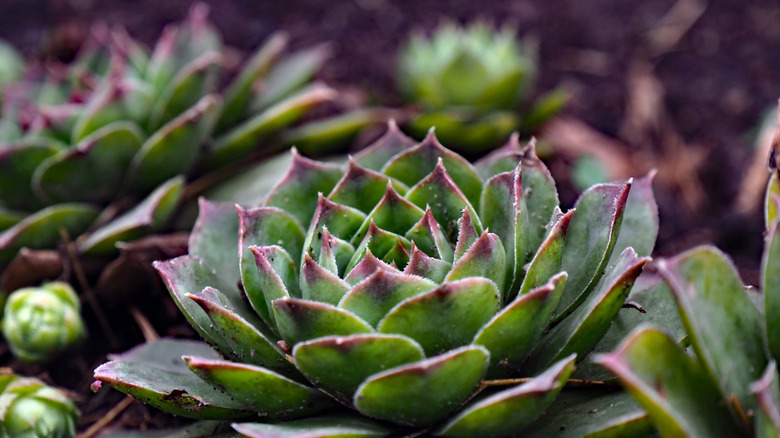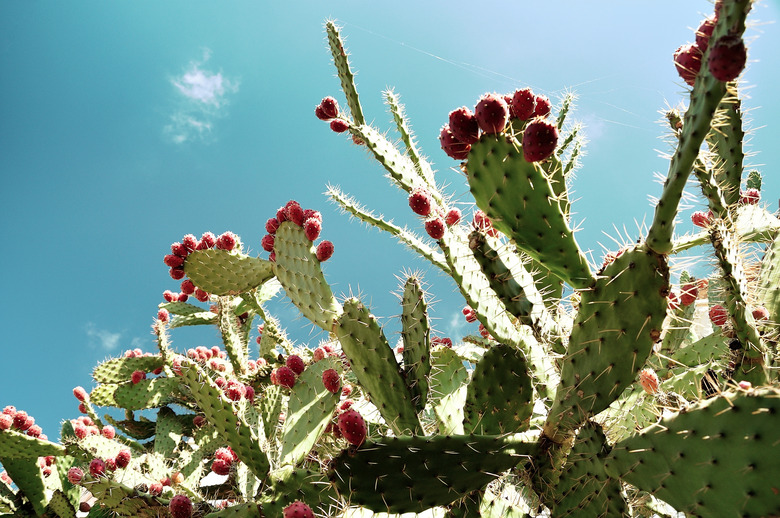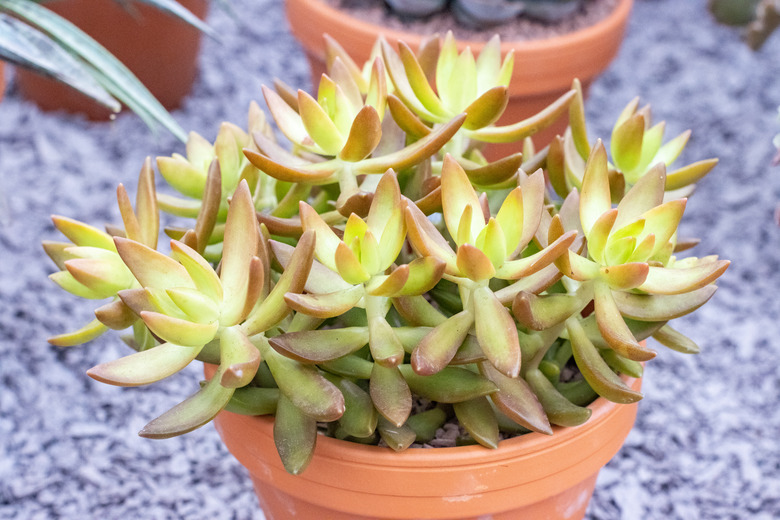Examples Of Succulent Plants (With Photos)
Succulents are a class of plants characterized by their thick, fleshy leaves, roots or stems. The succulent plant definition also includes the ability of these specialized structures to store water, allowing plants to survive through periods of prolonged drought or persist under harsh growing conditions. Though many are familiar with easily recognizable succulents like cactus and aloe, several less well-known nominees also make good candidates for succulent gardens.
Examples of Succulent Plants
Aloe Vera
Best known for its medicinal use in easing sunburn and speeding the healing of superficial cuts, Aloe vera (USDA zones 10-12) is a member of the Asphodelaceae plant family. One of more than 400 species in the Aloe genus, aloe vera is a tender perennial which can be damaged by frost. North of USDA zone 10, you should bring aloe vera indoors in the winter months and grow it in a loose, friable potting mix. You can also grow aloe year-round as a houseplant.
Agave
Many of the more than 100 species of Agave feature spiny, upright leaves. Popular for the species' general ability to withstand extremes in temperature, prolonged drought and poor soil conditions, agave species and cultivars come in many different sizes, textures and colors. Most species require full sun but little water or additional fertilizer to thrive. As a member of the asparagus plant family (Asparagaceae), agave plants include the agave harvested to make tequila.
Hen and Chicks
The University of Vermont notes that there are thousands of cultivars in the Sempervivum genus, one of which is hen-and-chicks (Sempervivum tectorum, zones 3-8), a succulent garden favorite. These plants grow around the world, though only several dozen are easily acquired through commercial nurseries. The plant's habit of forming smaller rosettes around the main plant gives rise to its common name, hens-and-chicks, as it resembles nothing so much as a mother hen surrounded by her brood. Hen-and-chicks is an example of the types of outdoor succulents that are extremely hardy, withstanding winter temperatures as far north as USDA Zone 3.
Prickly Pear Cactus
The Eastern prickly-pear cactus (Opuntia humifusa, zones 4-9) is one of a handful of examples of cactus plants that are native to the East Coast, all belonging to the genus Opuntia. Extremely hardy, prickly-pear cactus grows with a sprawling habit, eventually forming clumping mats of flat, fleshy paddles which are studded with long spines and shorter bristles. The bright yellow flowers, which flower in spring, give rise to the edible "pear," which turns a deep maroon color when ripe.
Stonecrop
One of the most versatile groups of plants for any garden, stonecrop grows in full sun to partial shade with thick, fleshy leaves growing all along its short, trailing vines. Stonecrop plants populate numerous genera and species, including Sedum and Hylotelephium. Stonecrop is suitable for use as a ground cover, in rock gardens or cascading over walls. Most species are very hardy, typically to zone 3, and in warmer climates remain evergreen through the winter. Plants perform best on rich, well-draining soils, but also tolerate a wide range of soil and moisture conditions.
Living Stone Plant
Living stone plant (Lithops spp., zones 10-11), a curious South African native, looks exactly like a smooth pebble. Plants grow at or just above the soil surface, and the thick, stubby "leaves" that protrude generally take on the color of the surrounding rocks and soil. Lithops are usually bifurcated, or divided into two distinct sections, though sometimes plants grow in clusters of six or more.
According to the University of Wisconsin-Madison, rainfall in the native habitat of this plant is only 20 inches each year, which averages only 1/2 inch each month. Plants bear a sweetly scented, daisy-like flower once a year during the South African rainy season. Because it is frost-tender, living stone plant is best grown as a container plant, though it can be moved outdoors during the summer months.
